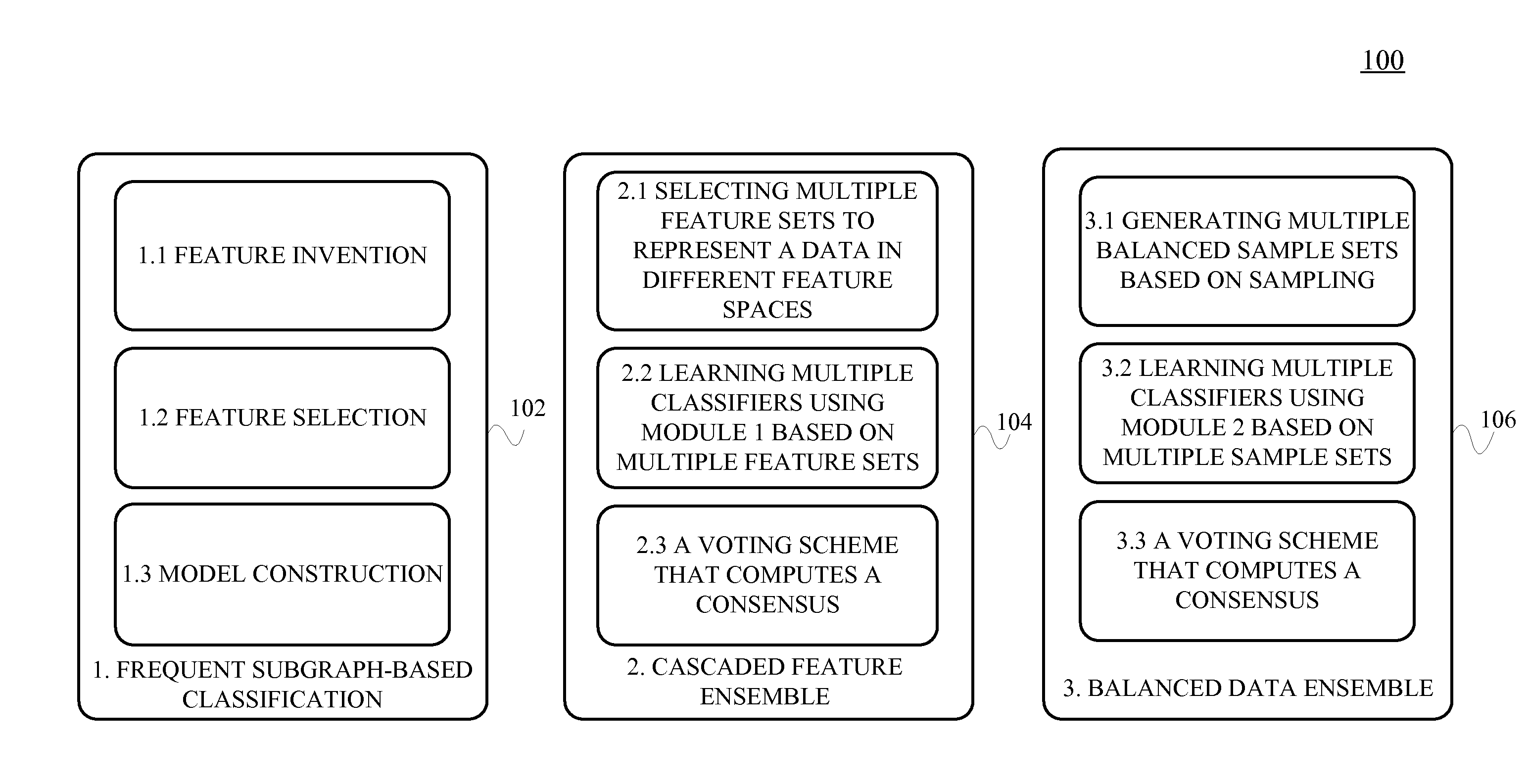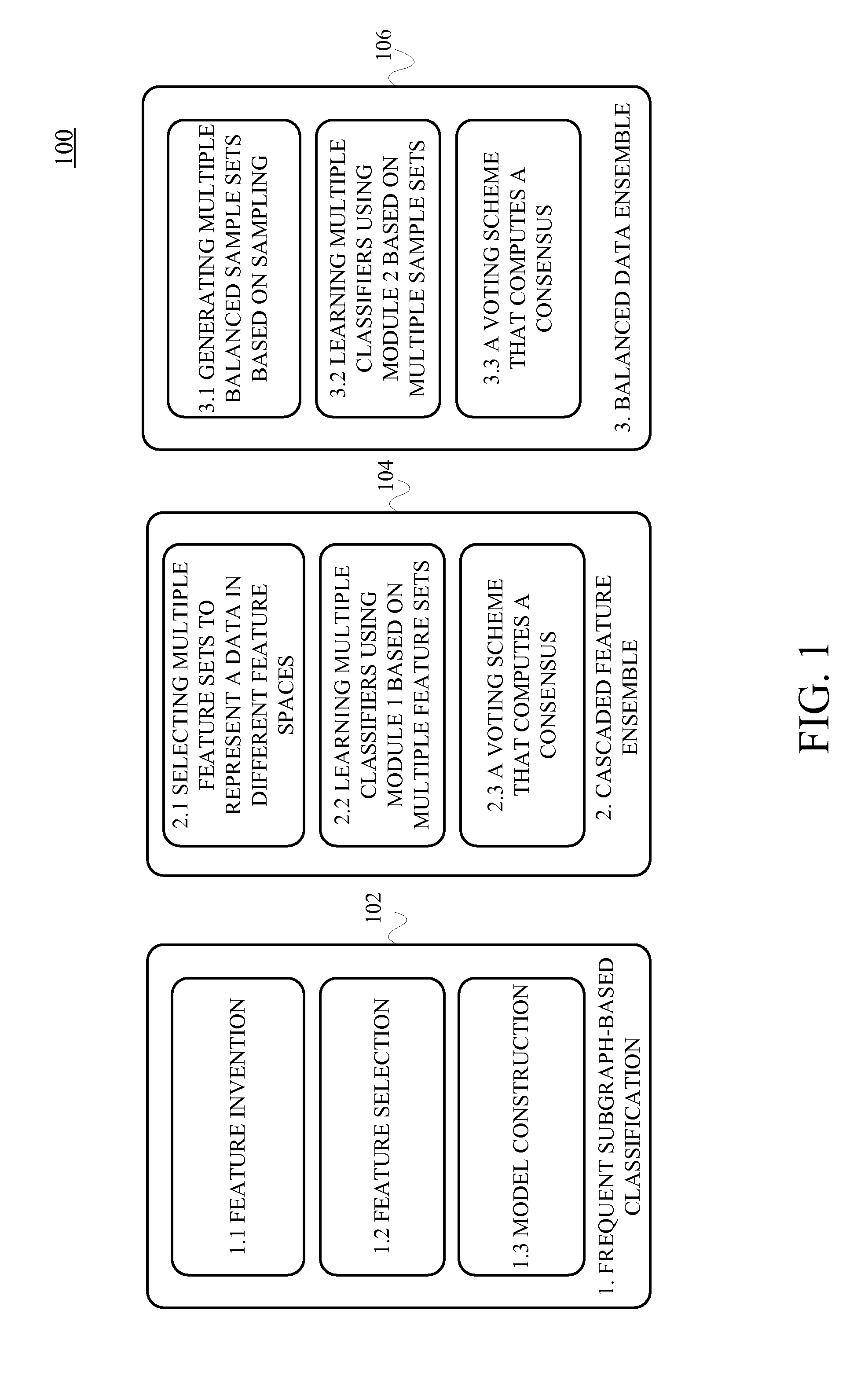Method and apparatus for structural data classification
a technology of structural data and classification method, applied in the field of structural data classification in database systems, can solve the problems of large, complex structural data, and significant limitations of advanced database system research
- Summary
- Abstract
- Description
- Claims
- Application Information
AI Technical Summary
Benefits of technology
Problems solved by technology
Method used
Image
Examples
Embodiment Construction
[0017]While illustrative embodiments of the invention may, on occasion, be described below in the context of chem-informatics and bio-informatics type datasets, it is to be understood that principles of the invention are not so limited. That is, principles of the invention are applicable to any suitable datasets that represent structural data.
[0018]FIG. 1 is a diagram illustrating the functional modules of classification system 100, according to an embodiment of the invention. The system includes the following three modules:
[0019]Frequent Subgraph-based Classification Module 102: Given a set of graph data, the first step is feature invention (1.1), where frequent subgraph mining is applied to construct discriminative features from graph datasets. Then feature selection (1.2) is applied to single out a compact set of features, from a large set of frequent subgraphs. Based on the feature set, the graph data is transformed into a feature vector representation, on top of which a classif...
PUM
 Login to View More
Login to View More Abstract
Description
Claims
Application Information
 Login to View More
Login to View More - R&D
- Intellectual Property
- Life Sciences
- Materials
- Tech Scout
- Unparalleled Data Quality
- Higher Quality Content
- 60% Fewer Hallucinations
Browse by: Latest US Patents, China's latest patents, Technical Efficacy Thesaurus, Application Domain, Technology Topic, Popular Technical Reports.
© 2025 PatSnap. All rights reserved.Legal|Privacy policy|Modern Slavery Act Transparency Statement|Sitemap|About US| Contact US: help@patsnap.com



